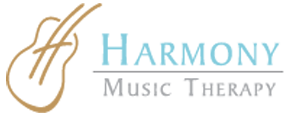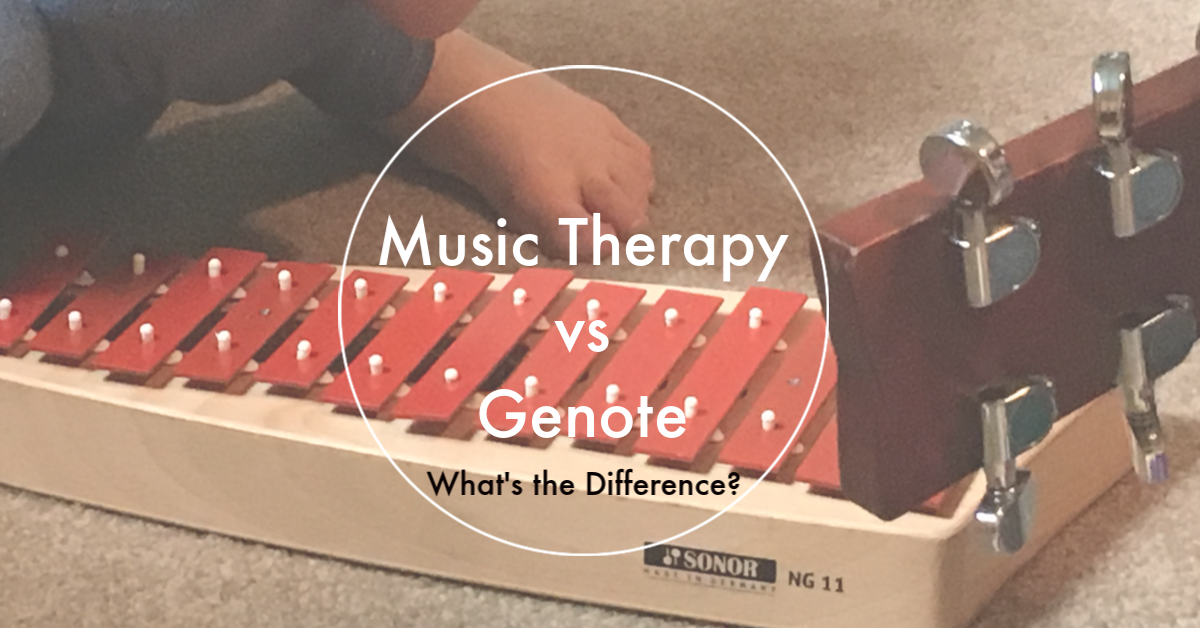Genote vs Music Therapy: An Honest Comparison
It can be difficult to understand the differences between all of the options for “music health”. Here is a straightforward comparison of Music Therapy vs. Genote to help you make an informed decision based on your needs.
Music is all around us. We all need it, we are all drawn to it, and most of us recognize that life is just not complete without it–(with the exception of Miguel’s family in Disney’s Coco, at least for a few generations!)
A wide range of music programs have been emerging in the past few decades and especially in recent years. People are creating organized ways to tap into the power of music. Many of these programs advocate music health (a recent buzz word) and use music to elevate mood, improve sleep, and decrease anxiety.
Genote is one such program that advocates for music health. Genote is an online music listening platform designed to help health professionals, educators, and anyone who needs personal help to create customized “Music Health” playlists. These playlists target specific goals and are linked to positive outcomes in emotional well being.
So how do “music health” programs differ from “music therapy”? Are they one and the same? Is one better than another?
The short answer is that no, they are not one and the same. And no, one is not better than another. Each serves a different purpose, and each is beneficial in different areas for different reasons.
Let’s compare Genote to Music therapy.
What is Genote?
Genote is an online listening platform that provides “personalized therapeutic playlists and sounds” for healthy recovery and quality of life. The four main areas it focuses on include sleep, stress reduction, recovery and boosting focus.
So how does it work? It’s really quite simple: pick a playlist and follow the protocol below!
STEP 1: Place your device close to the individual you want to listen (2-3 feet). Start Health Music and adjust the volume to the level of a quiet conversation.
STEP 2: Have the individual begin her/his learning activity (reading, writing, drawing).
STEP 3: Allow the entire program to run as the child enjoys the activity.
There is no training required, just a little bit of time involved to select the music you want to listen to. Each person explores what music works best for them in a given moment.
Genote is basically a convenient library of beautiful and intentional music at your fingertips, all intended to help achieve specific outcomes through listening.
It is well designed and useful to those who need quick access to music recordings to meet specific needs for sleep, stress reduction, focus, and recovery. Personally, I am always on the lookout for quality music to help with these areas, and Genote is an incredible resource at a low cost.
So how then is that different from music therapy?
What is music therapy?
While Genote is a user friendly, extensive, and helpful music listening resource, it is vastly different from music therapy. In fact, it is difficult to even put them into the same category because they each serve such a different purpose.
The main similarity between the two is that both use music as the driving force for achieving optimal health. But Genote uses music in vastly different way than music therapy.
The foundation of music therapy is human connection. In music therapy, pushing “play” on a song is not what stimulates growth. Rather, it is working with a person who seeks to know you, understand you, recognize your strengths and admit your weaknesses; and help you use music to overcome challenges and reach amazing goals. That person is the Music Therapist.
Music therapy strengthens, teaches, and supports individuals from the inside out, using music as the foundation for a meaningful therapeutic relationship.
Board Certified Music Therapists design interventions with their clients and help them work toward meaningful outcomes including improved social skills, enhanced communication, more articulate speech and language, increased attention and focus, improved motor coordination, or deeper emotional healing and expression.
The therapist helps the client experience joy. They overcome challenges. And they discover and maximize natural strengths. It all happens through music and the relationship they develop through shared creativity.
It is all very active, personal, and hands on.Clients experience what it feels like to use music to express who they are most deeply. They create their own music, write songs, play instruments, sing, move, and express difficult emotions through music. They do not simply listen to music for specific outcomes (although listening is often involved); rather they create and work through music to deepen the human experience.
Four Awesome Benefits of Genote:
So of course, while the two approaches are vastly different, they are each needed. Genote is wonderful and people love it. Here’s why.
- Accessibility: Genote can be accessed via a URL on any device that connects to the internet.
- User-Friendly: Genote is easy to understand, and gives you an easy guide to find the type of listening experience you are looking for.
- Great Content: Genote contains a large music library with high quality and diverse content–you will always know where to find the type of music you are looking for.
- Cost Effective: You will simply pay a per month bill
Four Awesome Benefits of Music Therapy:
Music therapy is very different from Genote, and is incredibly powerful for those who seek self improvement and progression. Here are 4 distinct benefits of music therapy compared to Genote:
- Human Connection: The therapeutic relationship is at the heart of music therapy. Your music therapist will learn about and understand your unique needs, and will guide you or your child in overcoming personal challenges.
- Provided by a Professional with Extensive Education/Training: Board Certified Music Therapists have extensive training in how to use music to bring about meaningful growth. We’re not just random folks with guitars–we’re trained clinicians with 4+ years of training. (learn more about the training required to be a music therapist)
- Music Therapy Brings Out Natural Strengths: One of our favorite parts about music therapy is that clients often discover and maximize their natural strengths in the process of creating music. They might discover that they are more creative than they realized, that they have a knack for songwriting, or that they are more connected to music than they realized. The power is there, we help bring it out.
- Music Therapy Unleashes Creativity: When you participate in music therapy, you access your inner creativity. In fact, it’s that creativity that is often the catalyst for change and progress, and you will love how amazing it feels to become a better version of yourself!
Here is a quick glance comparison between the two programs:
| Genote | Music Therapy |
|---|---|
| General Music Lists | Individualized Approach |
| No training required–can be used by anyone | Provided by a trained Board Certified Music Therapist (4 Year Bachelor’s Degree in Music Therapy + 6 month clinical internship with a Board Certified Music Therapist + Passage of National Board Exam) |
| Cost per membership (access to all music) | Cost per session |
| Specific Targets | Broad Scope of Practice enables therapist to use music for many possible outcomes |
| Research focuses on general music, and includes references to music therapy-specific outcomes | Evidence Based |
| Focuses on personal listening experience | Focus on Human Connection |
Which option is best for you?
If you feel like you would benefit from either Genote or Music Therapy, you’re in luck! Genote offers a free trial, and we provide trial music therapy sessions to help you get a sense of what it’s like and whether it is the right fit for you.
Request a Music Therapy Trial Session
Sources:
Pelletier, C.L., 2004. The effect of music on decreasing arousal due to stress: a meta-analysis. J Music Ther.
Knight, W.E., Rickard, N.S., 2001. Relaxing music prevents stress-induced increases in subjective anxiety, systolic blood pressure, and heart rate in healthy males and females. J Music Ther 38, 254-272.

